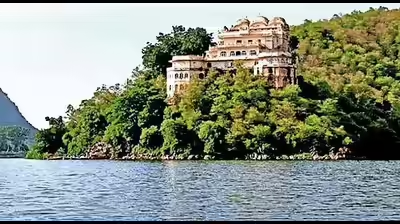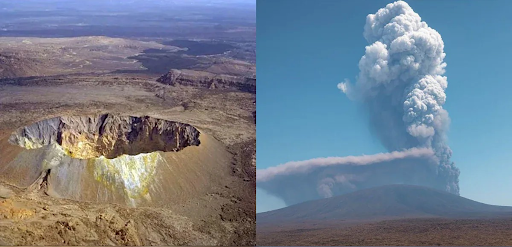




Source: IGI
Disclaimer: Copyright infringement not intended.
Jwaneng Diamond Mine in Botswana world's richest has propelled nation's economic transformation through advanced & responsible mining producing over 13 million carats in 2023 alone.
|
Aspect |
Details |
|
Location |
About 170 km southwest of Gaborone, Botswana; situated in an ancient volcanic crater. |
|
Meaning of Name |
Jwaneng means place of gems in Setswana language. |
|
Ownership |
Operated by Debswana a 50:50 joint venture between De Beers & Botswana government. |
|
Geology |
Located atop a kimberlite pipe a volcanic geological formation that brings diamonds from Earth mantle to surface. |
|
Discovery & Operation |
Discovered in 1970s; operations began in 1982. |
|
Production (2023) |
Produced 13.3 million carats making it richest diamond mine in value globally. |
|
Cumulative Revenue |
Estimated to have crossed $96 billion since inception. |
|
Economic Impact |
Accounts for up to 70% of Debswana earnings; key to Botswana’s rise from a poor to a middle-income country. |
|
Technological Edge |
Uses large drills, X-ray & laser sorting in its processing plants. |
|
Eco-Certification |
First mine in Botswana to receive ISO 14001 certification for environmental management. |
|
Future Expansion |
Cut-9 project (Euro 1.5 billion) to extend operations till 2035, expected to generate 53 million carats more. |
|
Underground Mining Plan |
Approved in January 2024; estimated to generate Euro 20 billion & create thousands of jobs. |
|
Sustainability Initiatives |
Ongoing efforts to reduce environmental impact, with green initiatives & ecosystem support. |
|
Social Responsibility |
Investment in education, healthcare, housing & wildlife conservation in Botswana. |
|
Global Status |
Known as Prince of Mines due to its high economic & ethical standards. |
|
Diamond Mine |
Country |
Estimated Value / Annual Production |
Operator |
Key Features |
|
Jwaneng |
Botswana |
~13.3 million carats (2023); ~$1 billion+ value |
Debswana (De Beers + Govt. of Botswana) |
Richest mine by value; sits on kimberlite pipe; ISO 14001 certified |
|
Orapa |
Botswana |
~12 million carats/year |
Debswana |
One of largest by area; open-pit |
|
Udachny |
Russia |
~5 million carats/year |
ALROSA |
Deep open-pit mine; transitioning to underground |
|
Mir (Mirny) |
Russia |
~2 million carats/year (before closure) |
ALROSA |
World’s second-largest excavated hole |
|
Catoca |
Angola |
~6–7 million carats/year |
Endiama + Alrosa + LLI |
4th largest globally by volume |
|
Venetia |
South Africa |
~4.5 million carats/year |
De Beers |
Largest diamond producer in South Africa |
|
Argyle (Closed 2020) |
Australia |
~14 million carats/year (peak) |
Rio Tinto |
Known for pink & red diamonds |
|
Letšeng |
Lesotho |
Smaller volume but highest average value/carat |
Gem Diamonds |
Famous for large high-value diamonds |
|
Diavik |
Canada |
~6–7 million carats/year |
Rio Tinto |
Arctic mining; uses ice roads |
|
Gahcho Kué |
Canada |
~4.5 million carats/year |
Mountain Province + De Beers |
One of Canada’s newest & richest mines |
|
Mine / Project |
State |
Status |
Operator / Agency |
Key Details |
|
Panna Diamond Mine |
Madhya Pradesh |
Operational |
NMDC (Govt. of India) |
Only active diamond mine in India; located in Vindhya Range |
|
Majhgawan Pipe |
Madhya Pradesh |
Operational |
NMDC |
Part of Panna group; diamond-bearing kimberlite pipe |
|
Bunder Project |
Madhya Pradesh |
Lease transferred (non-operational) |
Initially Rio Tinto → Essel Mining (Aditya Birla Group) |
High-grade deposits; eco-sensitive area; stalled due to environmental concerns |
|
Kollur Mine (Historic) |
Andhra Pradesh |
Closed (Historic Site) |
N/A |
Source of famous Koh-i-Noor, Hope Diamond during medieval period |
|
Wajrakarur Kimberlite Field |
Andhra Pradesh |
Exploration Phase |
Geological Survey of India |
Significant kimberlite pipes discovered |
|
Raichur-Gulbarga Belt |
Karnataka |
Exploration Phase |
MECL / GSI |
Ancient deposits; under exploration |
|
Sambalpur–Nuapada Belt |
Odisha |
Exploration Initiated |
State Govt. + GSI |
Potential kimberlitic zones being studied |
For more such articles, please visit IAS GYAN
Sources:
|
PRACTICE QUESTION Q. Jwaneng Diamond Mine stands as a global model of resource-based development. Critically examine role of mineral wealth in transforming national economies with special reference to Botswana & India. |






© 2025 iasgyan. All right reserved